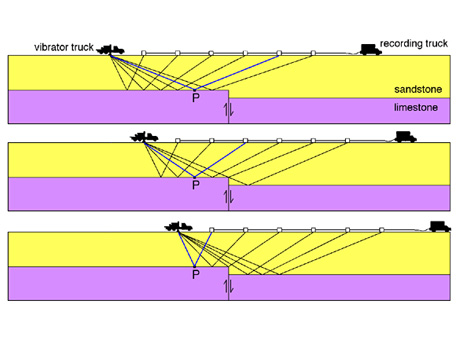
Deep seismic reflection surveying is the most advanced technique in geophysics today due to its major application for oil and gas exploration. This technique has other applications on a smaller scale, such as for civil engineering & infrastructure projects. The methodology is same as that used for Oil Exploration, but the equipment used shall be suitable for providing a higher resolution as here we deal with shallow depths.
Seismic energy is generated at the surface using either impulsive sources (dynamite) or continuous sources (Vibroseis). The returned energy is recorded by a series of geophones installed along lines at the surface.
Reflection of the energy is due to the acoustic impedance contrasts between the various layers, which is recorded by these geophones. Data processing is a complex sequence of operations which is carried using specialized software on computers. The final product is a 2-D or 3-D dataset of seismic reflectors, which is then interpreted and correlated to specific geological interfaces with the help of borehole logs available.
Applications include: